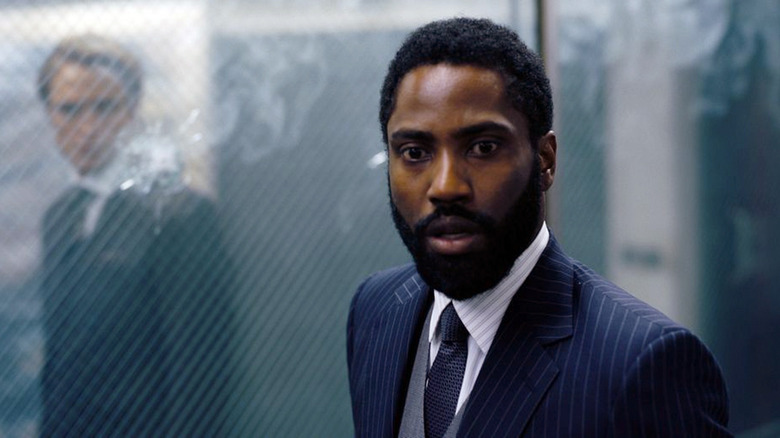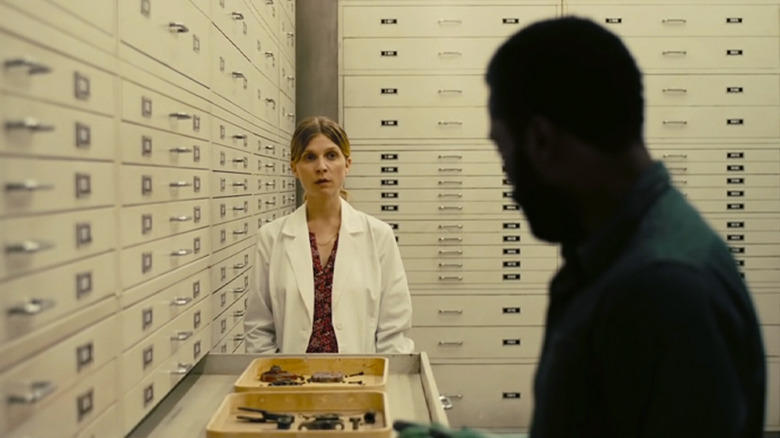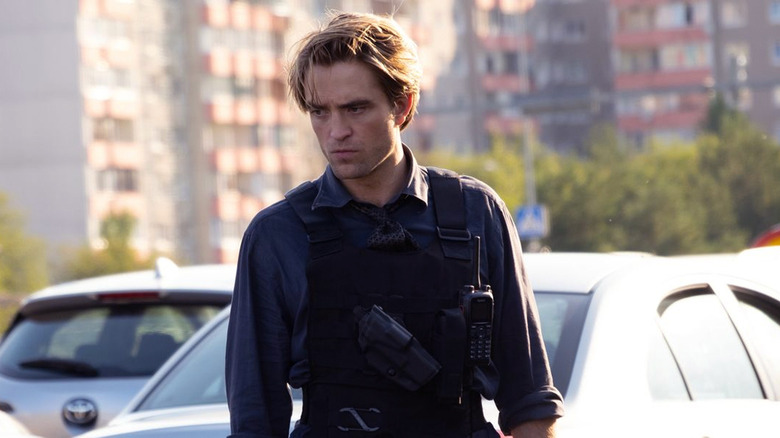Tenet's Time-Bending Action Was More Real Than You Think
Say what you will about the convoluted plot of "Tenet," the latest from boundary-pushing filmmaker Christopher Nolan. Sure, for as many times I've seen the film, the less I seem to understand — each subsequent watch seems to dredge up more questions than I had before. But it's clear now that we're not meant to fully understand the film so much as "feel" it, as Clémence Poésy's no-nonsense scientist encourages The Protagonist (John David Washington) to do early in the film.
For all the trippy science woven throughout the film, you can certainly feel the care that Nolan put into "Tenet." If nothing else, "Tenet" is the director's latest love letter to cinema and all that can be accomplished within the medium (blockbuster budget permitting). Even the cast and crew — who seemed just as bewildered by the film as audiences are to this day — were equally passionate about bringing Nolan's vision to life.
Still, you need more than passion to birth a film as ambitious as "Tenet." Logic-defying plot aside, Nolan's staunch preference for practical effects over computer-generated visuals imbued the "Tenet" set with an interesting challenge. How could its action sequences — which involved set pieces and characters moving both forwards and backward in time — unfold onscreen as organically as possible?
Lets Try to Understand A Little, Shall We?
For those in need of a refresher, the basic tenet (heh) of "Tenet" is time manipulation (or inversion, as they call it in the movie). In the world of the film, characters are able to move backward through time through a process called inversion. Subjects have to pass through something called a turnstile which inverts their entropy (a fancy physics term that measures disorder within our universe). The turnstiles essentially allow subjects to fight against the forward flow of time. To the inverted, they're moving forward while the rest of the world appears reversed.
The concept seems simple enough on paper but becomes increasingly more complicated as "Tenet" makes good on its promise of action. Each mounting action sequence builds on what inversion can accomplish, and the Protagonist's duel with his inverted self in Freeport is crucial in establishing the phenomenon. This scene has birthed many an explainer across the Internet, and the director himself even admitted that these sequences took several months to choreograph and develop. Speaking to NPR about the process, Nolan said:
We had to do everything four different ways ... The actors are learning how to throw a punch backwards. They're also trying to work with the stunt team to determine what an inverted punch against somebody who's not inverted, what effect that has ... Then the actors coming in had to learn how to walk backwards, talk backwards. In [actor] Ken Branagh's case, talk backwards with a Russian accent.
Give and Take
Andrew Jackson, the visual effects supervisor on "Tenet," spoke to the in-depth research that both the stunt team and the actors put in to accomplish their backward trajectory. "Very early we filmed people doing various things and reversed it and watched that," Jackson told befores & afters. "[The stunt team] were mimicking exactly what they looked like when they were reversed, just from the footfalls and the bounce and how the timing looked."
Overall, Nolan was committed to grounding "Tenet" in as much reality as possible. But when it came to hand-to-hand combat scenes, certain trickier movements had to be cheated. The most difficult movement to perform in reverse — like, for example, a fall — would be filmed in real-time and reversed in post-production. "The actor playing opposite the actor falling would perform his own actions backward to create the scene," Jackson revealed to the L.A. Times. "This allowed postproduction to keep the action as it plays out, or reverse it, depending on where it landed in the story."
"Tenet" is chock full of complex logistical action, something that both Nolan and his team are rightfully proud of accomplishing. The film's awards campaign was surprisingly low-key (thanks in part to Nolan's behind-the-scenes drama with Warner Bros.), but "Tenet" still took home an Oscar for Best Visual Effects — and rightfully so, as both cast and crew went above and beyond to suspend disbelief.
Nolan's next feature will be the quieter "Oppenheimer," the director's first biopic, about the man who invented the atomic bomb. Though it's not likely for the film to push as many logistical boundaries as "Tenet," it's sure to feature some stunning practical effects — that is, after all, a part of Nolan's signature style.


